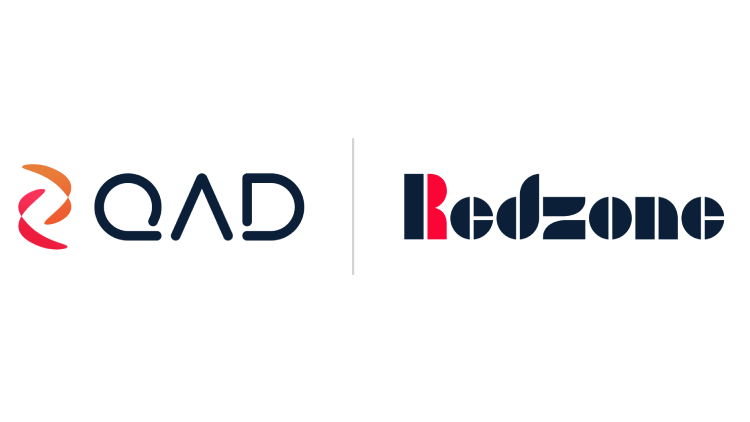Promotional Features
4 pillars of manufacturing success amid the ongoing labour crisis
Here are four actionable ways manufacturers can make the most of their existing workforces to combat the current labour crisis –and thrive despite it, by nurturing their talent pipelines.
1. Empower and engage frontline workers
Employee engagement is tough to define, and managers often think they know it when they see it. Overall, engaged employees value the organisation and find satisfaction in improving the workplace. The challenge lies in instilling that engagement in employees.
Employees who are emotionally committed to their job have a 17% boost in productivity with reduced absenteeism of 41%. They are also more likely to stay in the job longer, with some teams reducing employee turnover by 59%.
Lack of engagement means low productivity and high employee turnover. So combating the labour crisis by prioritising more worker engagement starts with empowering employees to view factory jobs as long-term careers and not just temporary pay cheques. Ensure management welcomes employee expertise and is open to suggestions from the frontline.
Managers can also help employees realise their value and find satisfaction in a workplace where their voices are heard and their opinions are respected. Don’t stop at giving workers the opportunity to offer real-time feedback from the frontline. Give them the tools to uncover and fix problems independently. Offer them access to continuous learning and career development to respond to emerging changes and challenges on the line.
2. Emphasise immediate productivity
There are numerous components of productivity from workflows to training, tools, maintenance, and supply chain. Too often, managers tame the complexity by focusing on future planning rather than acting today.
Instead, concentrate on immediate impact.
● Use real-time productivity stats and health status reports so workers can see how their productivity measures up and pinpoint bottlenecks so that workers can take the initiative to solve them.
● Help frontline workers see when machines need maintenance and get access to on-the-go troubleshooting when problems arise. It will trim the equipment downtime costs that can set manufacturers back US$50bn per year.
● Provide self-serve training tools that workers know how to access and use. Step one is building a culture of continuous improvement. It helps frontline employees complete more tasks for a self-fulfilling cycle of empowerment, action and success.
An action-oriented mindset isn’t just positive for frontline employee satisfaction. It helps workers make course corrections in real-time.
3. Connect teams digitally
Too often, the historical reality of factories meant workers were hyper-focused on a small section of the process, with no real insight into other parts of the manufacturing process. They were unaware of the scope of the problem and hesitant to handle it on their own. Indeed, workers did not solve the problem. Instead, they left the line to ask questions before taking action.
Walking between stations, finding the telephone and leaving a message for the right person, or waiting for an email are legacy communication approaches that slow production. And the lack of instant communication between all teams leads to consequences.
Fast, cross-team communication makes a difference – and it’s important to implement at all levels. When increasing channels for worker communication, make sure workers can communicate problems and solutions to team members at all levels. Support from leadership can make employees feel more inclined to innovate and contribute, and the absence of that support can set the whole team back.
Integrated communications also offer opportunities to build camaraderie and relationships that increase engagement. Whether it’s between leaders or co-workers, opening the floor to communication is part of building a strong culture of belonging, which, in turn, keeps employees satisfied and productive.
As workers contribute to the company’s overall success, make sure to celebrate their achievements publicly. When managers acknowledge their employees, workers are more likely to stay in the job.
4. Simplify daily operations and toolkits
Managers agree that employee engagement and productivity decrease with poor communication. Furthermore, 61% of manufacturing industry managers feel that using digital tools for communications improves productivity.
When workers can assess the context of a problem and its ramifications across stations, roles, and even lines, they have a better understanding of how to solve it, as well as access to specialists who can help make it happen. Replace legacy tools with widespread digital devices that are intuitive, easy to learn, and allow everyone to participate in the conversation.
Then automate as much as possible. Identify which production processes need an upgrade and which would benefit from automation. Automate compliance and maintenance reminders to help workers take ownership. Use automation to save skilled workers for tasks that challenge and excite them.
Finally, integrate with third-party and custom applications for a fully connected business. Working together as a team helps people take control of their lines, with more visibility to define and solve problems without management.
Why the 4 pillars matter
Used together, the four pillars support a mindset of continuous improvement and point to actions that support success.
Uncover hidden capacity
Production lines work fewer days and hours to realise the same production levels. Managers can uncover capacity in terms of heightened productivity, but also employee innovation. When communication and problem-solving opportunities increase, workers can find ways to modify the workflow to reduce downtime.
Increase productivity and profitability
When Redzone analysed 1000 organisations using its services, it found an average Overall Equipment Effectiveness (OEE) uplift of 14 points, corresponding to a productivity improvement of 29%.
Reduce employee churn
Redzone companies saw an average 32% reduction in employee turnover, and national rates were skyrocketing by 50%. The average Redzone company hired 13 employees to retain 10, whereas the average US plant hired 25 to retain 10 in that same period.
Enable strategic growth and predictable scale
Stabilise hiring and training while realising productivity goals and finding automation opportunities. Together, these interconnected improvements lead to greater transparency to scale smarter. That helps managers focus on the right things.
Hiring and training each new worker costs companies who use Redzone $12,876. That’s an average savings of $154,512 for every 10 new hires.
Connect and empower workers with Redzone
Redzone is an easy-to-use, all-in-one platform that enables manufacturers to:
● Connect and unify production: With team communication and visibility into how processes are happening in real-time.
● Enhance quality and maintenance: By automating audit and compliance tasks, keeping times of inspections, maintenance, and processes all in one place.
● Create ‘one team’: Across lines, job roles, language barriers, and even shifts, see and communicate with more workers to improve the plant for everyone. Help every worker win the day, every day.
● Provide easy-to-use tools: Redzone keeps workers on the line while connecting them to training materials, engineers, and managers. Co-workers can even build training modules to share with the team. It means specialised knowledge won’t be lost when the shift changes but will be shared and utilised by everyone.
Redzone’s unified platform brings the four pillars to life, so your workers can be more successful and make the plant a career they can be proud of.
Ready to see what Redzone can do for your frontline? Contact us for a free consultation.
Miami, FL (HQ) +1 305 374 6278
Denver, CO +1 720 223 6179
Birmingham, UK +44 121 740 0777
rzsoftware.com


![Chart from ebook[4]](/var/wrbm_gb_food_pharma/storage/images/_aliases/wrbm_large/media/images/chart-from-ebook-4/16430624-1-eng-GB/Chart-from-ebook-4.jpg)
![Single Stat[6]](/var/wrbm_gb_food_pharma/storage/images/_aliases/wrbm_large/media/images/single-stat-6/16430642-1-eng-GB/Single-Stat-6.png)
![The Virtuous Cycle Over Time Chart[6]](/var/wrbm_gb_food_pharma/storage/images/_aliases/wrbm_large/media/images/the-virtuous-cycle-over-time-chart-6/16430660-1-eng-GB/The-Virtuous-Cycle-Over-Time-Chart-6.jpg)
![Two Stats[6]](/var/wrbm_gb_food_pharma/storage/images/_aliases/wrbm_large/media/images/two-stats-6/16430678-1-eng-GB/Two-Stats-6.png)